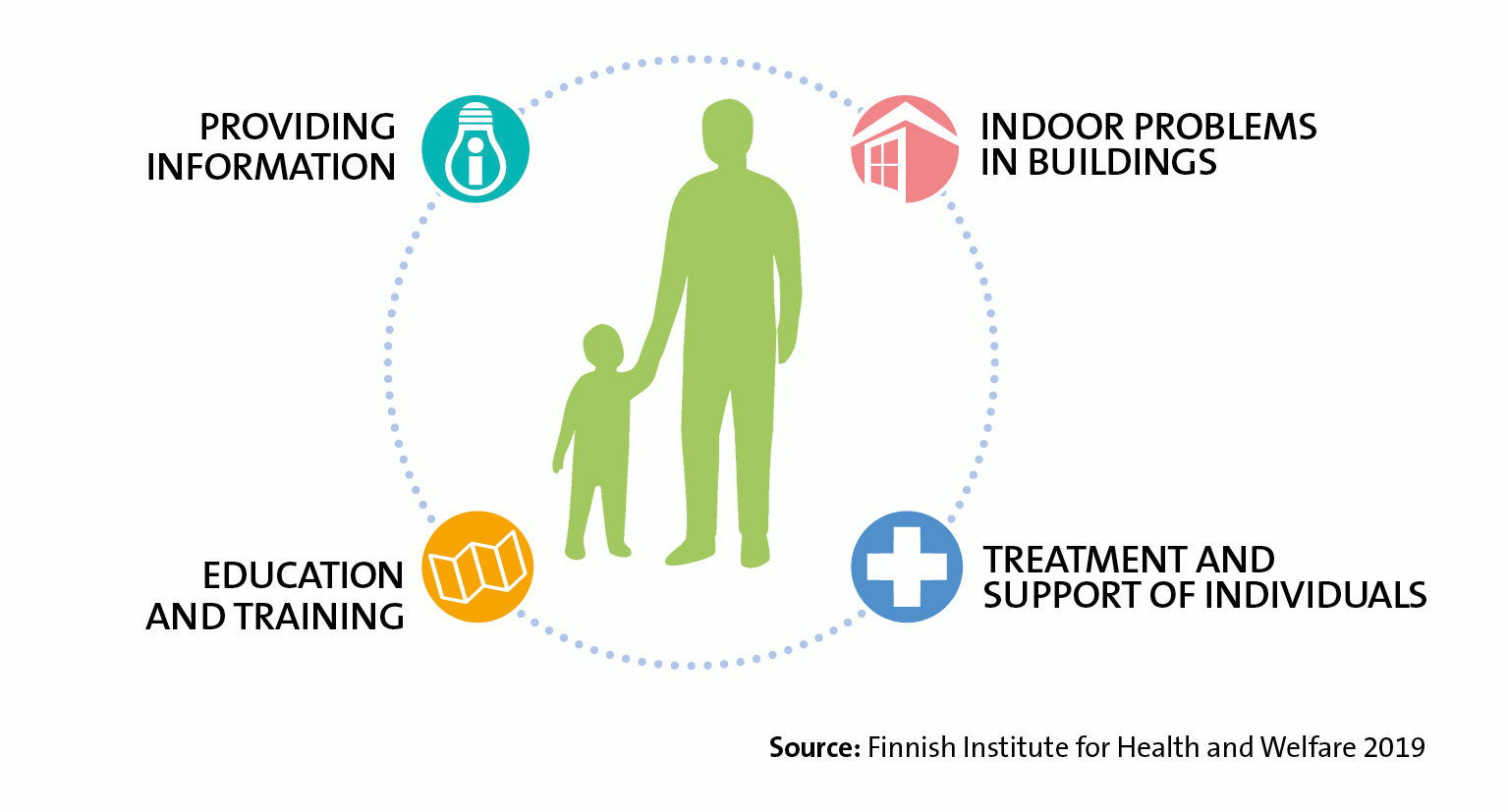Indoor air

A good and comfortable indoor environment, including indoor air, is an important factor in terms of well-being and supports functional capacity and health. In addition to the good quality of indoor air, indoor spaces should also promote well-being, working and learning. As we spend most of our time in different indoor environments, their quality plays an important role.
In a high-quality indoor environment, the temperature and air humidity levels are comfortable. Lighting, the acoustic environment, and the functionality and appearances of the building also influence the comfort of an indoor space and the well-being of its users. When maintaining the quality of indoor air, it is important to look after the condition of the building and its technical systems, such as ventilation, and to prevent and control the sources of impurities affecting the quality of the indoor environment. Among the sources of impurities transported indoors by outdoor air are traffic, small-scale burning of wood in households and industry. Indoors, impurities are generated, for example, by new building and interior decoration materials as well as by normal human activities such as cooking. Moisture damage may also be a source of impurities indoors.
Some of the impurities occurring in indoor environments may cause symptoms that are mainly mild and transient. However, getting symptoms is always individual and in addition to the harmful factors in indoor air, many other factors also contribute to it. For example, if signs of moisture damage or strange smells are observed in the indoor environment, it is important to determine their cause so that the possible sources of impurities or the conditions that may impair the quality of indoor air can be identified and remedied.
The programme develops new, evidence-based methods and solutions to solve problems related to indoor air and to help and support people with symptoms and illnesses.
The Finnish Indoor Air and Health Programme





